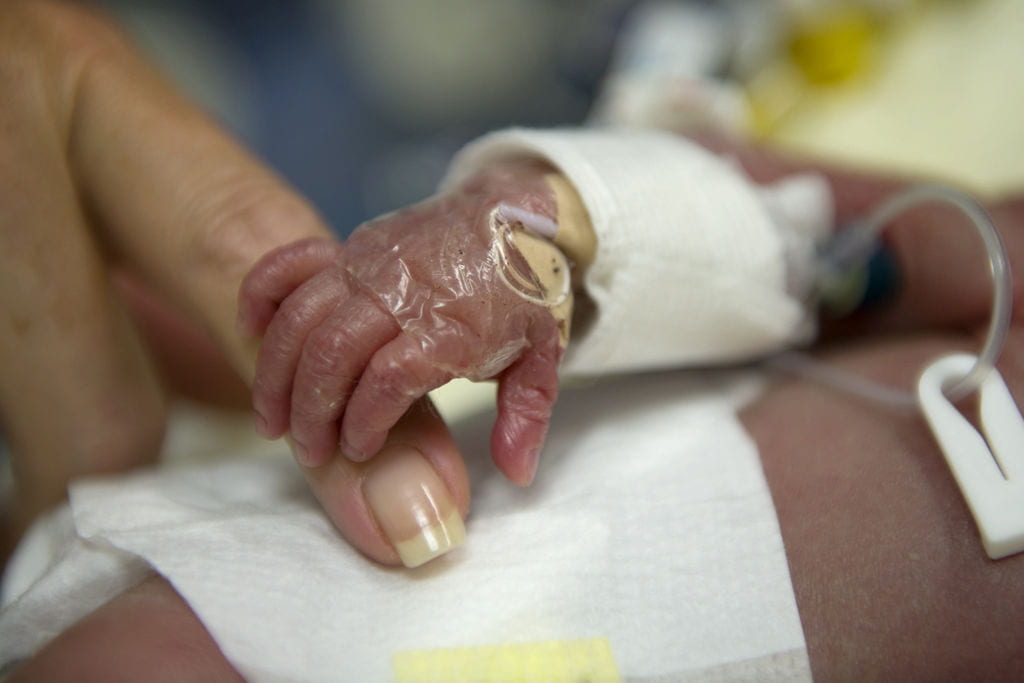Reducing infections, one central line at a time
Medical center takes aim at stemming patient complications and healthcare costs.

It’s a reasonable expectation: Hospitals should not expose patients to potentially life-threatening infections. Yet each year, nearly 250,000 hospitalized Americans acquire a kind of infection that is fatal in as many as 20 percent of the cases.
The culprit is the central line catheter, a sort of superhighway for medication, nutrition and fluids inserted directly into one of the body’s largest veins. It can become infected with bacteria that wreak havoc in patients and extend their hospital stay. Treatment is costly and time-consuming.
In an effort to document and stem the problem, the California Department of Health Services in January will begin requiring public reporting of hospital-acquired infections, including central line infection.
UC Irvine Medical Center’s infection control team is ahead of the curve, having trained staff since early 2009 to reduce hospital-borne infections in intensive care units.
“Our successful effort to reduce central line infections is good for the hospital, and most importantly, good for the patient,” says Linda Dickey, nurse and assistant infection control director.
Central line infections have been a problem at hospitals worldwide for generations, according to Dr. Eugene Spiritus, chief medical officer at UC Irvine Medical Center. “It’s only been in the last few years,” he says, “that medicine has made headway in reducing them.”
Neither new drugs nor advanced technology solve the problem. Instead, it is rigorous attention to routine and a religious commitment to hand hygiene that keep infections at bay.
“Doctors and nurses must take the same steps each time they insert or clean a central line,” Spiritus says. “Recent research has shown that even a single missed or rushed step – such as failure to thoroughly clean the insertion site or wear proper protective garments – can lead to an infection.”
As a result of UCI’s infection control efforts, the neonatal intensive care unit recently went nearly eight months without a central-line infection in a newborn, far exceeding the national benchmark. Vigilance is especially important in the NICU, where vulnerable infants, many born prematurely, are most susceptible to infection.
Providing intensive care is complicated, and patients in any ICU may be subject to hundreds of daily actions from healthcare workers, plus visits from friends and family. Any one of them may inadvertently introduce bacteria that could develop into an infection.
“We approach the central lines as sacred,” says Robin Koeppel, NICU clinical nurse specialist. “We’ve restructured our care to reduce the number of opportunities to introduce an infection.”
It’s not just a local effort; the University of California, the Centers for Disease Control and Prevention and The Joint Commission (the nonprofit organization that accredits U.S. hospitals) have made reducing the infections among their top priorities.
Treatment of central line-associated bloodstream infections costs the U.S. healthcare system $2.7 billion annually, according to the CDC, which has launched a campaign to get hospitals to improve their practices. Though the equation is simple – reduce central line infections and see lower patient mortality and costs – the solution has proved to be anything but. Hospitals worldwide have long struggled to control the infections. Seventeen states now require public reporting of infection rates, a step regulators and health experts hope will prompt more hospitals to be aggressive.